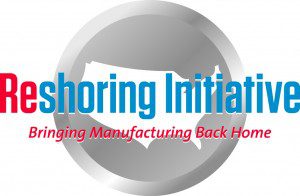
The reshoring trend got a boost last week at the Reshoring Summit: Bringing Manufacturing Back to the U.S., held right here in Cleveland. The summit’s focus was on educating manufacturer’s on the benefits of bringing manufacturing work back to the U.S., which included making the business case for such a move, as well as hearing successful reshoring case studies and learning the practical steps involved in bringing work back to the U.S.
While the reshoring movement is no doubt a positive development for manufacturing, the numbers tell a story of far more manufacturing jobs in China, let’s say, than in the U.S. So that blip on the radar screen is the trickle of jobs that may either be headed back to the U.S. or are remaining or being created here instead of in other countries.
Still, Harry Moser, founder of the Reshoring Initiative and a presenter at the Reshoring Summit, argues that only when not considering total cost of ownership (TCO) does it make sense to manufacture in foreign countries, like China. It’s only when TCO is considered that the costs to manufacture in the U.S. are actually lower than in China.
But even if that is true, the reality is that companies are choosing to manufacture in China not only to export back to the U.S. but in order to have a presence in the Chinese market with its burgeoning middle class and soaring demand for manufactured goods. If nothing else, this may prove that the simple black-or-white picture that’s often used in describing what is happening in the manufacturing world is inaccurate, and is probably more grayer than we’d like to admit.
One thing is certain, however. We’ll continue to cover the developments in this area. In the meantime, you can read more about reshoring here in an analysis by Design World editor Paul Heney.


Leave a Reply
You must be logged in to post a comment.